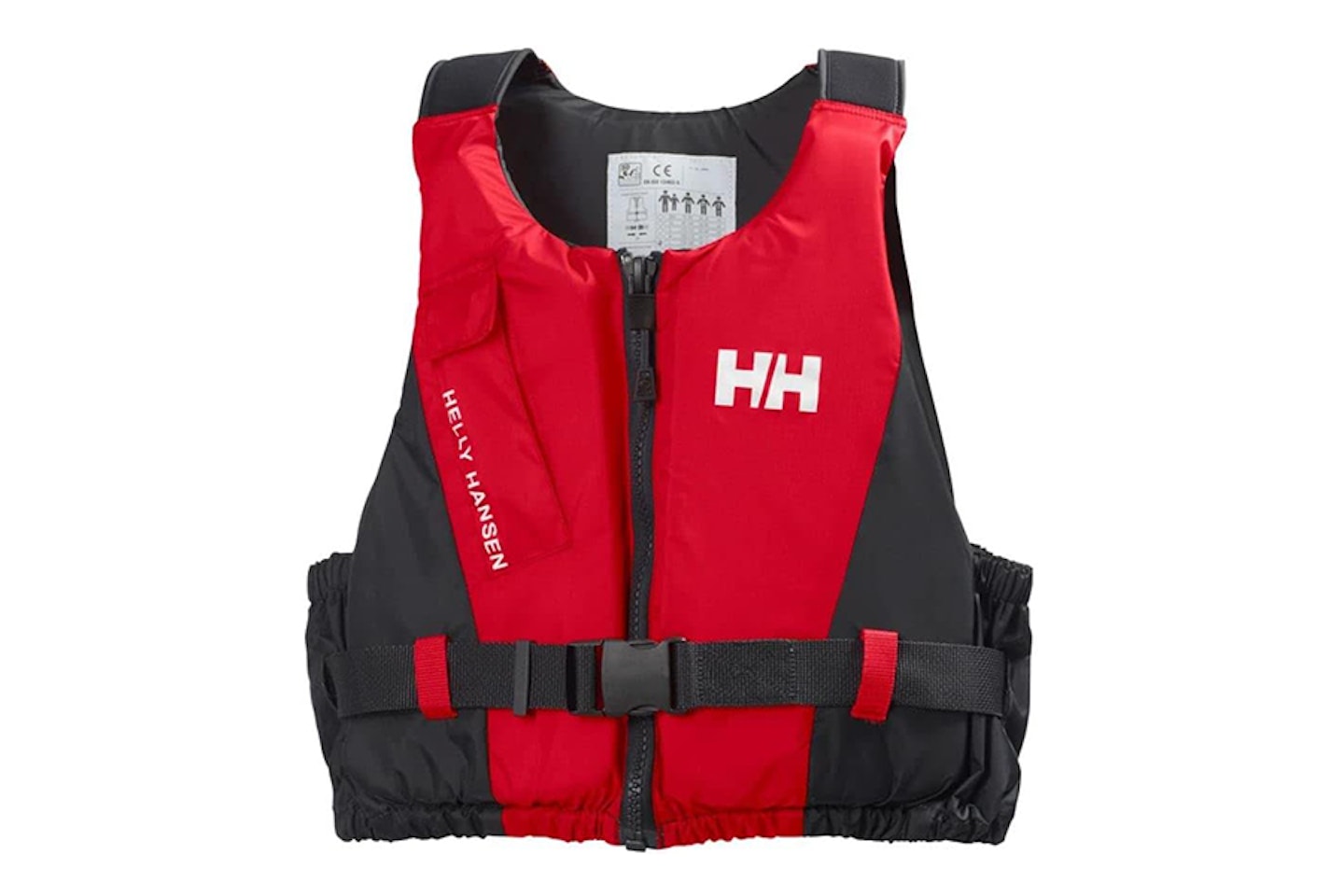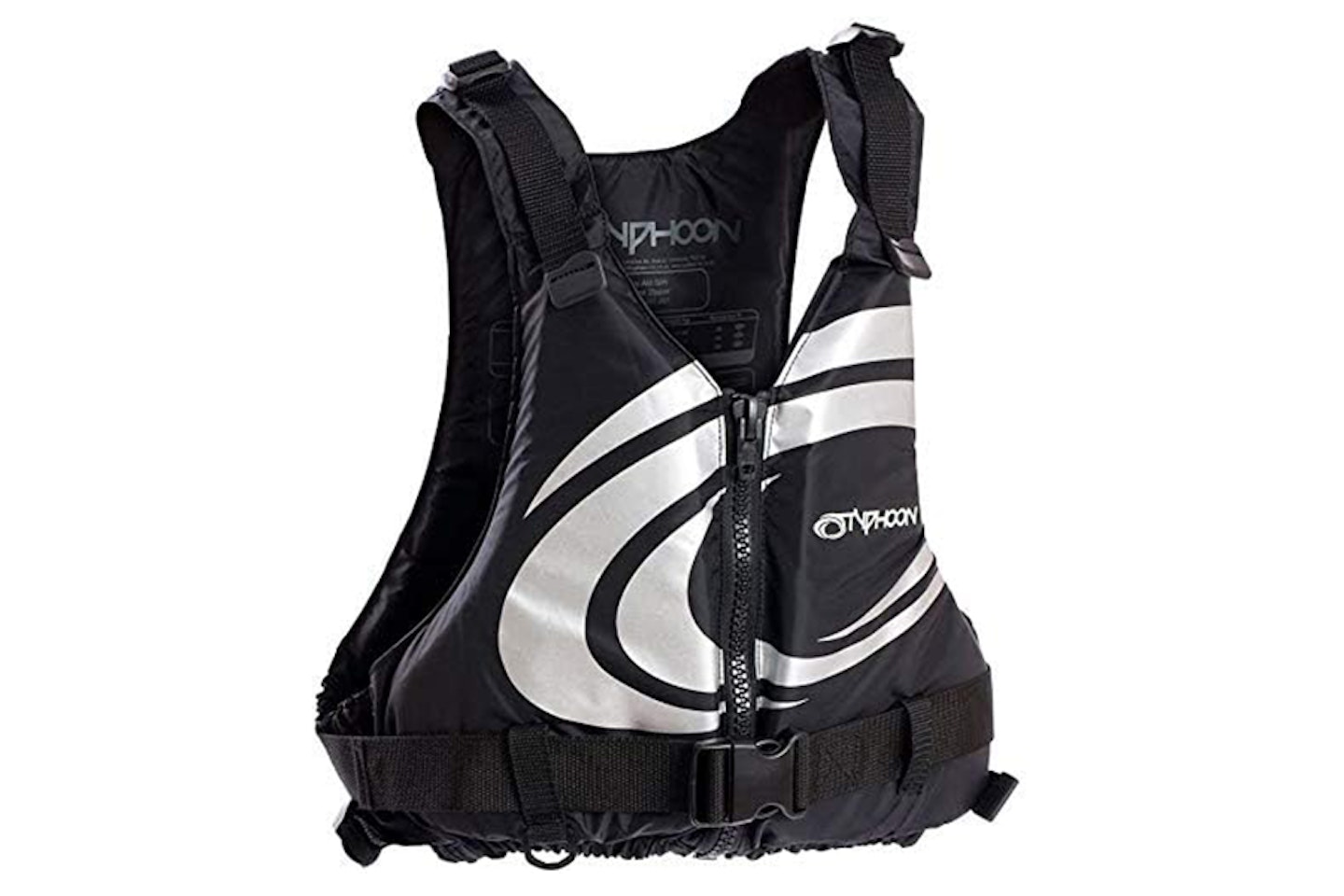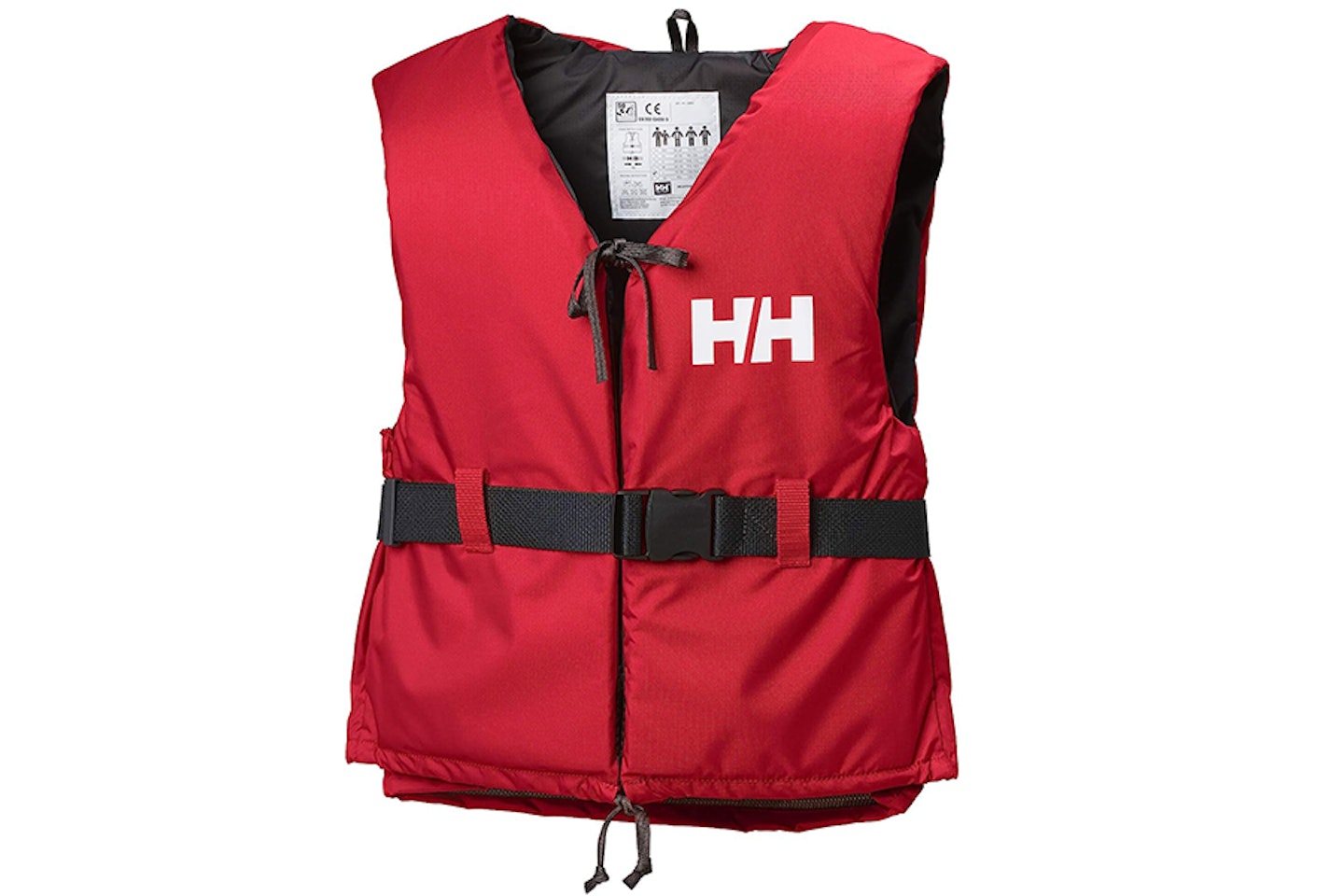Summer might be fleeting, but that doesn't mean our paddleboards and inflatable kayaks are in winter hibernation. Whatever the weather, it's important to ensure your buoyancy aids are in top order. If not, it's time to get a new one.
A buoyancy aid (BA) is a type of personal flotation device (PFD), safety equipment that helps keep you afloat in water. BAs have an ergonomic fit and relatively non-bulky fit, which gives you plenty of freedom in movement and are perfect for kayaking, paddleboarding, windsurfing and sailing. BAs should not be confused with life jackets, which are designed to keep your face out of the water and save your life if you can't swim or are unconscious.
You might also hear them called swimming aids, although this is a very broad term that can include things like floats or armbands. But buoyancy aids are in a class of their own safety-wise. They’re generally made of foam, and covered in a hard-wearing nylon sleeve.
The best buoyancy aids at a glance:
-
Best overall: Helly Hansen Rider Vest – View at Amazon
-
Best for children: Konfidence Jacket – View at Amazon
-
Best for kayaking: Typhoon Yalu Wave – View at Amazon
-
Best for SUP (stand up paddleboarding): ITIWIT Buoyancy Aid – View at Decathlon
Though choosing the right paddleboard might be the more exciting purchase when you're getting into water sports, the buoyancy aid is of huge importance. Don't neglect it.
The best buoyancy aids
All prices are correct at the time of writing. Prices, stock and deals are subject to change without notice.
Please note that our buoyancy aid recommendations are for recreational activities close to shore, with help nearby if you get into difficulties.
Best overall
If you’re an all-rounder when it comes to getting out on the water, you might prefer a highly adaptable and flexible buoyancy aid. Enter the Helly Hansen Rider Vest. Designed for all adults, it’s the most conventionally styled BA we have here with lots of adjustments.
The zipped front and large front buckle will let you wear or remove this quickly and easily. Plus there’s an adjustable bottom hem to help keep it in place. This also means that you can tweak the fit a little to suit your range of movement. Considering the traditional vest shape and wide-ranging suitability, as bulk goes this is surprisingly lean. All in all, this is a comfortable and flexible choice.
Pros
- Suitable for most leisure activities
- Available in a wide range of sizes
- Front pocket
- Comfort with adjustability
Cons
- No crotch strap
- May ride up on a sit-inside kayak
| Age range | Adult |
| Style | Front zip and buckle |
| Material | 100% polyamide foam |
| Crotch strap | No |
| ISO / CE certification | ENISO 12402-5 |
Best for children
Kids of all ages like to look cool when they’re splashing around, so it’s great that Konfidence has really pushed the boat out with its designs. There are over a dozen to choose from, with bright colours and exciting motifs for boys and girls.
This comes in several sizes designed for all ages up to 14 years. But what about very young children? The best buoyancy aids for toddlers, like this one, should fit well and provide some UV protection from the sun. This buoyancy aid is made from 3mm thick neoprene which gives 100% UV protection to all covered areas, as well as extra warmth in colder water. Depending on skill level in the water, a toddler may be more suited to the smallest of the Konfidence range – but always under adult supervision.
Teaching your baby to tread water? Well, as mentioned earlier, buoyancy aids are only meant for those who can swim unaided. Babies will need an adult with them at all times; so the choice of swim and safety wear is very much down to you.
That said, this is one of the very best swimming aids for three-year-olds, as not only will the extra buoyancy build their confidence, the eight internal floats can be added or removed to suit their swimming progression. Plus adults can easily spot them, as they bring a splash of colour to the water.
Pros
- Lots of great colourful designs
- Huge range of sizes
- UV protection
- Removable floats
Cons
- May need a size up for the right fit
| Age range | Up to 14 years |
| Style | Front zip |
| Material | 80% Neoprene, 20% Polyamide |
| Crotch strap | No |
| ISO / CE certification | EN13138-1 |
Best for kayaking
One of the most important aspects of any buoyancy aid for kayaking is having a snug but comfortable fit that still gives you plenty of freedom to move your upper body. This BA from Typhoon excels here, as it has a high trapeze cut (a tapered rectangle shape) that gives your arms, shoulders and chest plenty of range.
The waist webbing straps at the front, back and even the shoulders are fully adjustable for the perfect fit. The front zipper and quick-release buckle mean you’ll spend less time struggling to get this on and off.
We all know that kayaking is good for exercise, but all that plunging and paddling can quickly take its toll on a buoyancy aid. This one has Rip-Stop nylon outer over the foam inner. This type of material, if snagged, will resist those long tears that are so common with ordinary nylon. This BA is a hardy, adjustable and lightweight joy to use for any kayaker.
Pros
- Very adjustable
- Great range of movement
- Tear-resistant outer material
Cons
- No pockets
- Striking design but lacks colour options
| Age range | Adults / Young Adults |
| Style | Front zip and buckle |
| Material | Nylon |
| Crotch strap | No / Compatible |
| ISO / CE certification | EN393:1994 |
Best for sailing
Our second offering from Helly Hanson, the Sport II buoyancy aid has many excellent features that make it a great match for leisure sailing or flatwater boating.
You may be looking for the best buoyancy aid for dinghy sailing, or just a small one-man boat. Either way, this buoyancy aid is flexible enough to suit a wide array of sailing and similar water sports. Again, here there’s a front buckle, an adjustable hem, plus a top tie to keep things in place. There’s no front zip on this BA though, which will only concern those who prefer paddling over sailing. The lack of a front zipper will help with breathability in warmer weather - great for anyone sailing for fun in the summer.
Only a couple of colour options here – red or navy – but they're good choices to have. Opt for bright visibility or the muted navy blue as a low-key addition to a brighter wetsuit.
All in all, this is a solid, if basic, buoyancy aid with a very clear purpose in mind. What it does, it does simply – and brilliantly.
Pros
- Lightweight
- Quick to put on
- Good breathability
Cons
- No adjustable shoulder straps
- No front zip may be an issue for paddlers
| Age range | Adults / Young Adults |
| Style | Jacket with front buckle and tie |
| Material | 100% Polyamide |
| Crotch strap | No |
| ISO / CE certification | ENISO 12402-5 |
Best for dogs
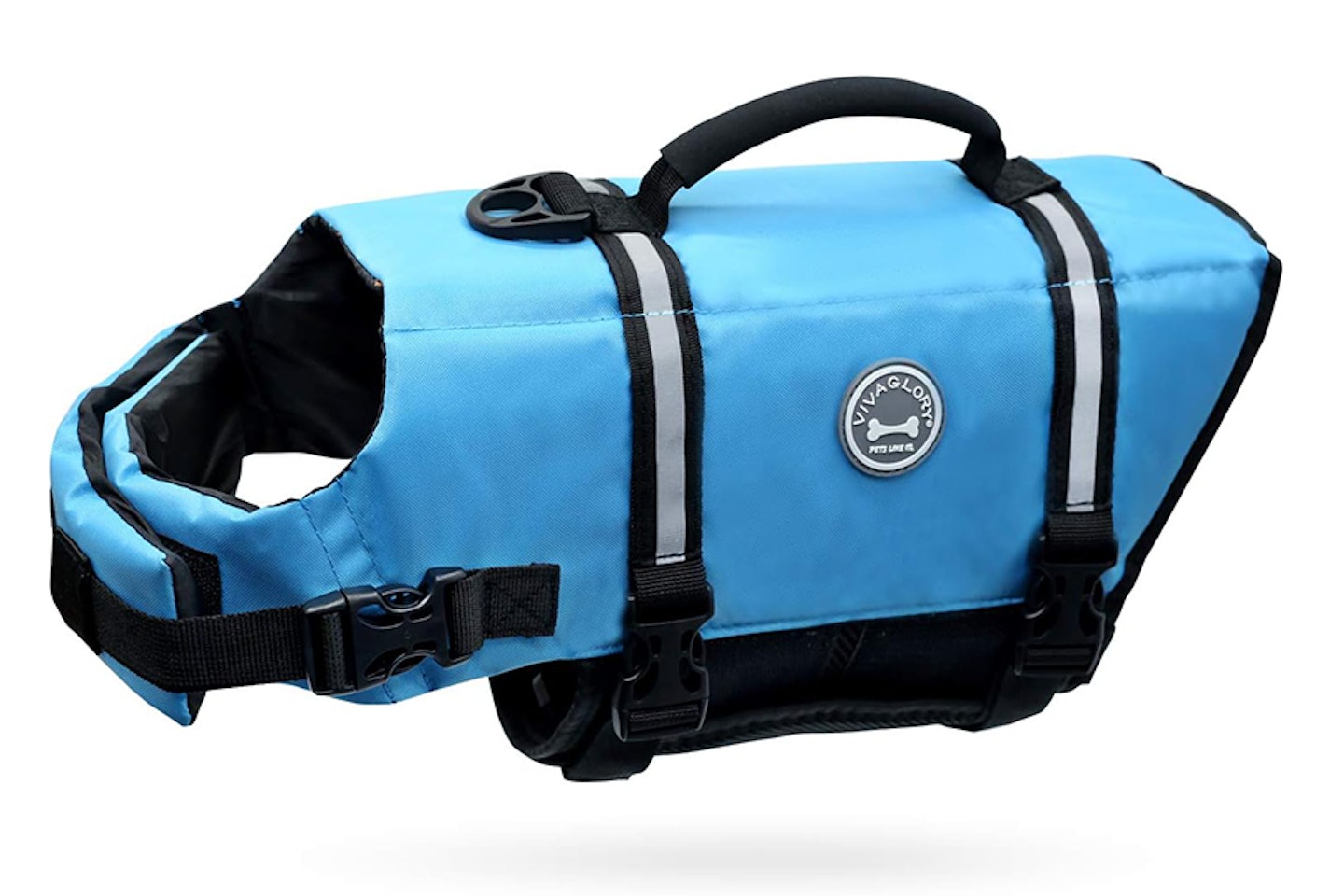
And finally… There are plenty of adventure-seekers who like to take their pets with them. More often than not, dogs are up for the challenge. Even the strongest of canine paddlers will run out of steam at times, so this is billed as a life jacket for dogs.
There's a range of colours and sizes to choose from. Sizes are based on your pooch’s ribcage measurement and weight, so make sure you take your time before you buy one. The right size will help it to stay in place in the water and provide enough flotation.
Visibility is excellent thanks to those bright hues, so you can always see where your pet is on your day out. A top-mounted handle makes for easy to move your pet in and out of the water or to and from your deck.
The adjustable strapping is tough with added reflective strips. Your dog will find they have plenty of room to manoeuvre, and you’ll enjoy watching them enjoy the water just as much as you do.
Pros
- High visibility
- Handle for easy moving
- Plenty of sizes to choose from
- ‘D’ ring for leash attachment
Cons
- As a budget buy the build quality is adequate
| Age range | N/a |
| Style | Dog jacket |
| Material | Foam and nylon |
| Crotch strap | N/a |
| ISO / CE certification | Not specified |
Best for SUP (stand up paddleboarding)
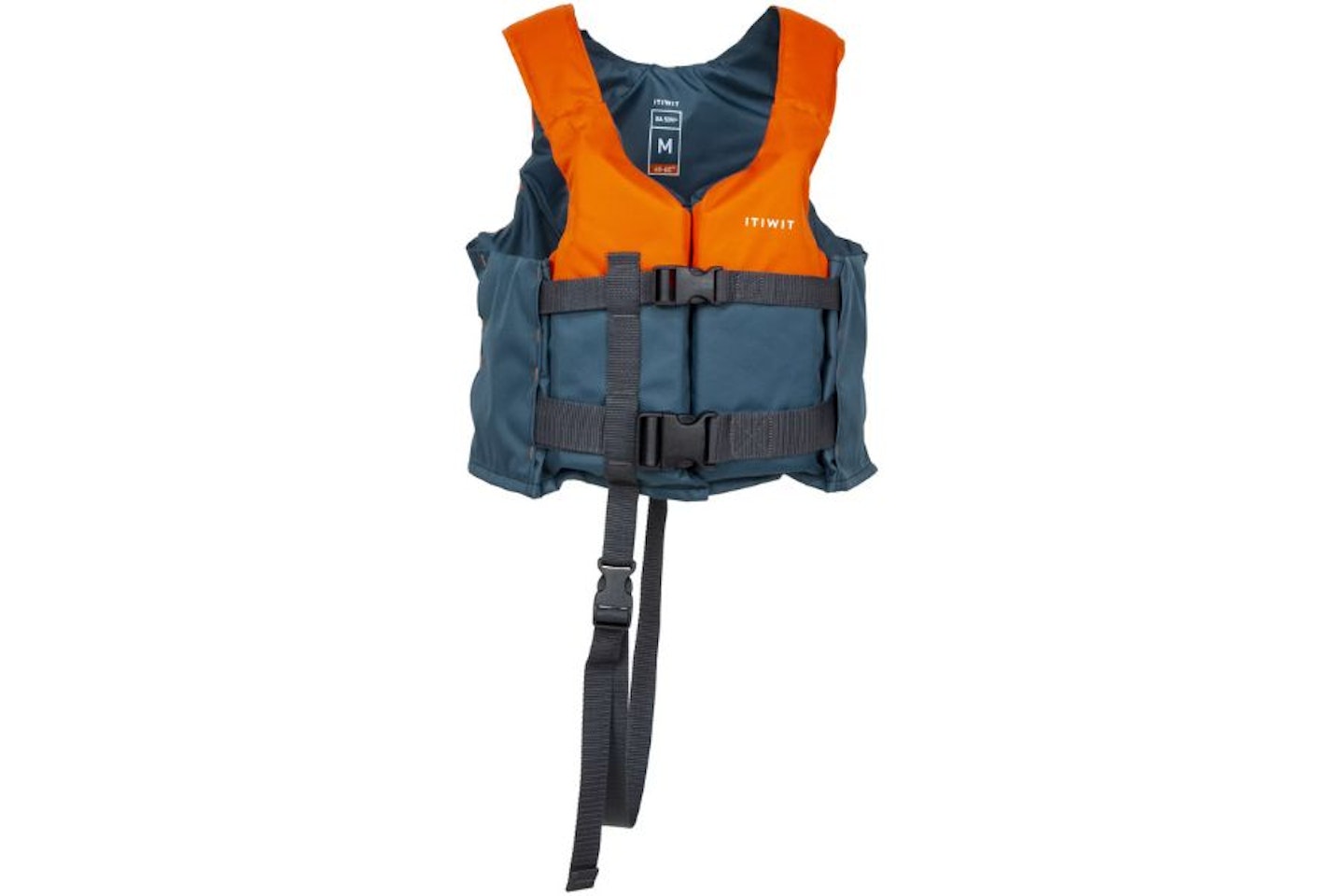 Decathlon
DecathlonITIWIT is a brand owned and operated by Decathlon, which is well known for its affordable and reliable equipment. The brand has developed a buoyancy aid that will serve well for multiple sports. However, we like it most for paddleboarding and kayaking due to its free movement around the arms.
The front-opening zip makes it easy to get on, and the two front adjustable buckles offer extra adjustment and safety assurance. The crotch strap, which will prevent the BA from popping up too high should you enter the water (intentionally or otherwise), also adds to the value here.
Pros
- Zip and double buckle
- Crotch strap
- Good fit, large arm holes and short body
Cons
- Sides are not elasticated
- No pockets
| Age range | Adults / Young Adults |
| Style | Front zip and buckle |
| Material | Nylon |
| Crotch strap | Yes |
| ISO / CE certification | EN ISO 12402-5 |
Buyer’s guide to buoyancy aids
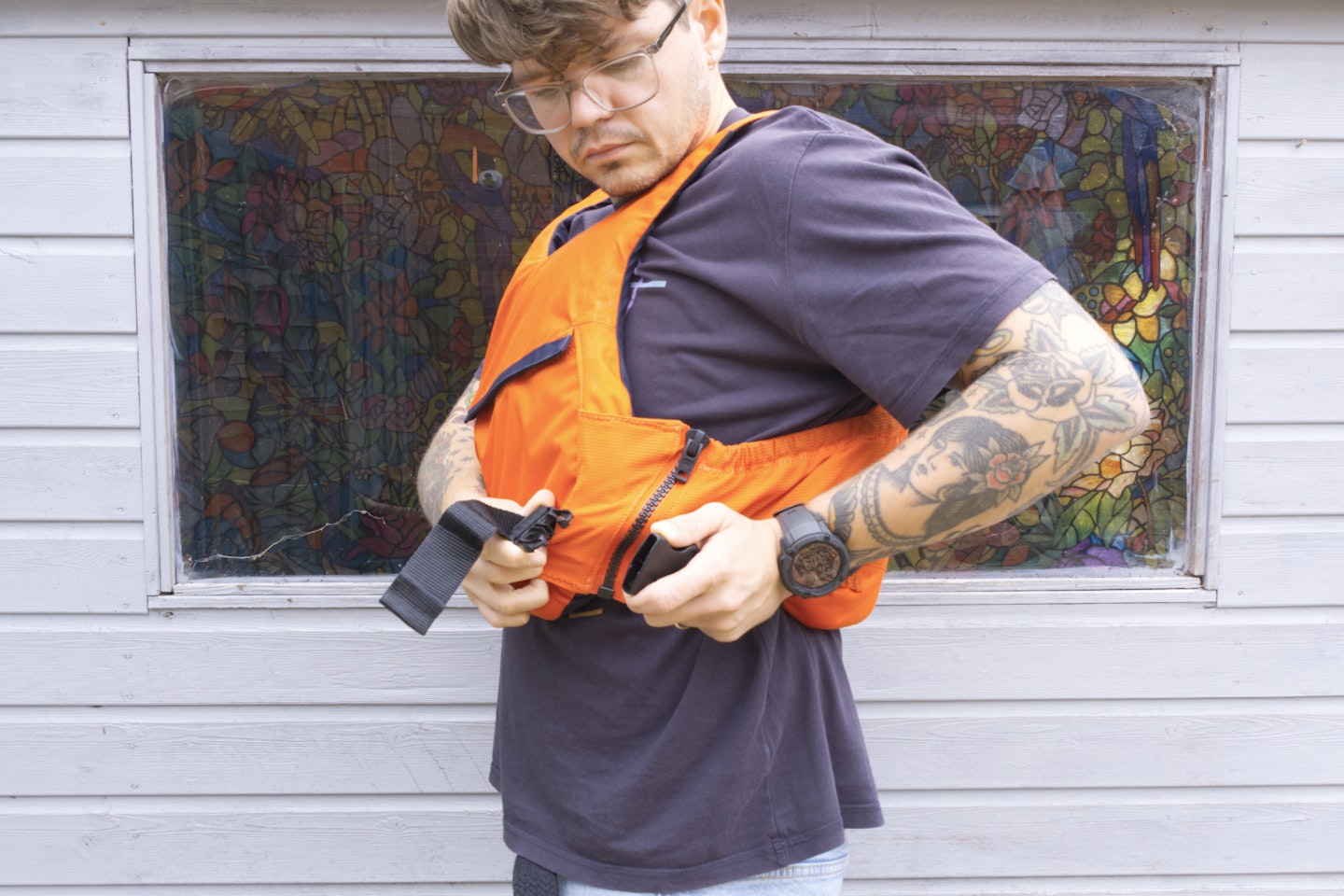
Please note that our buoyancy aid recommendations are for recreational activities close to shore, with help nearby if you get into difficulties.
When choosing the right buoyancy aid, you need to know your weight in kilograms (KG). This will ensure you pick an option with the correct amount of buoyancy provided by the aid. Once you know the weight rating, you can refine your choice with information like your chest size.
Before you buy any buoyancy aid, look for the all-important official CE safety standard - it's been illegal to sell a buoyancy aid without it since the nineties. All of our BAs below – excluding the dog jacket – carry a certification rating or CE mark. This ensures that the buoyancy it provides is accurate. It'll also mean that the product has been adequately tested and is suitable for recreational water sports like paddleboarding or flatwater boating.
Your choice will also be guided by the activity you will be doing, as buoyancy aids are available in different shapes and cuts, each suited to specific activities. For example, a kayaker may prefer a shorter body length for extra comfort while sitting and wider arm holes to allow freedom when rowing.
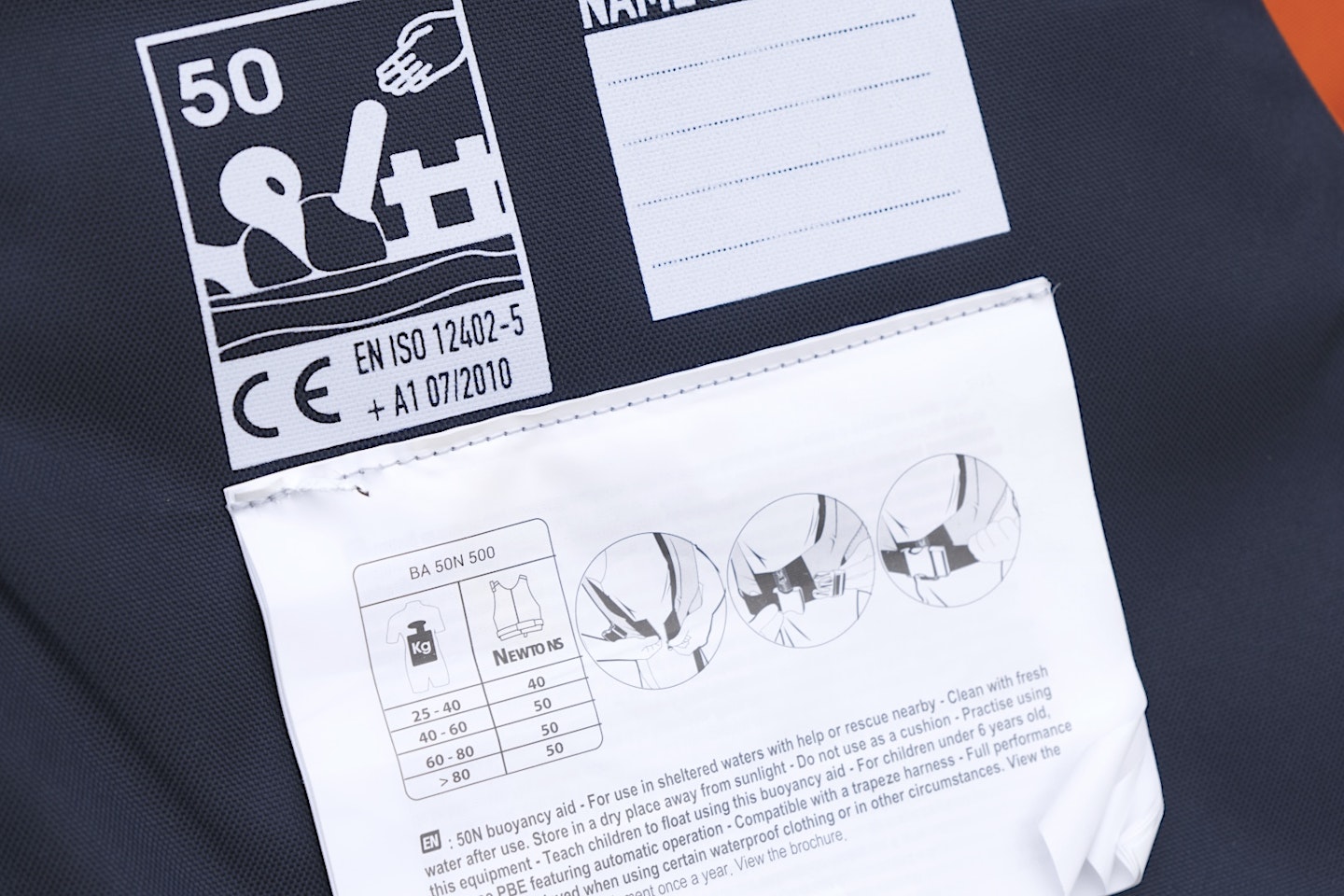
When to use a buoyancy aid
If you’re paddleboarding, sailing, kayaking, kite surfing or doing any water sport – always use a buoyancy aid. They're also only safe to use in sheltered or flat waters, and when you’re in sight of the shoreline. If you’re thinking of buying a BA and taking your kayak out for a spin, don't forget to consider what else to wear when kayaking, especially if you're new to the hobby.
BAs should only be worn by competent swimmers, with others close by to help if needed. Children and anyone who can't competently swim should always wear a life jacket and be accompanied by an adult at all times.
What to look for when buying
Primarily, you'll need a good comfortable fit. Even if the aid fits like a glove it might not offer you the range of movement you’d prefer. As with all safety equipment for active sports and hobbies, it's best to try it on before first use and exchange it for a different one if it's not comfy.
Some aids are pulled over your head like a vest, others fit like a jacket using zippers or clips. Your vest or jacket should fasten comfortably and securely around you. Zip and buckle fastening jackets are usually a bit easier to put on than simple pull-over vests.
How to pick the right size
Ask a friend to grab the top straps of the buoyancy aid and try to pull it over your head. They shouldn't be able to lift it more than 5cm before it stops moving. This ensures that you can’t slip out of it in the water. If you can't adjust it for a tighter fit, try a smaller size.
How to fit a buoyancy aid
Securely close any zippers and clips, starting from the bottom and working up. Don't forget those shoulder straps at the end. Then make sure that your buoyancy aid hugs you under your ribs without restricting your breathing. You shouldn’t be able to pull the aid up and over your head.
Finally, finely adjust the tightness of any straps, especially around the lower torso, for comfort and make sure that it will still let you move and breathe freely.

<strong>FAQs</strong>
What's the difference between a life jacket and a buoyancy aid?
A buoyancy aid is only designed to keep someone who can already swim afloat. A life jacket is specifically designed to save your life if you can’t swim or are unconscious. It does this by forcing your head to stay above water, whereas a BA will not do this for you.
Do buoyancy aids keep you afloat?
Yes. Providing you’re wearing the right size for your body, one of these aids can keep you afloat. But, as mentioned above – it will not keep your head out of the water if you’re unconscious.
How long do buoyancy aids last?
Our recommendation for the best overall buoyancy aid is the Helly Hansen Rider Vest. However, no BA will last forever. The amount of wear and damage your aid picks up is really down to how you use it. Any piece of sporting or leisure equipment will reach the end of its safe lifespan eventually. As a rule of thumb, you should expect three years of use. For safety, the key thing here is to regularly check your BA and always replace it when necessary.
Why should you trust us?
At What's The Best, our mission is to provide accurate and reliable reviews, ensuring our readers receive honest and transparent information about the best technology products available. Anything less would undermine our commitment to being a trusted source of unbiased product information.
Our dedicated in-house writing team comprises experts with extensive experience and a genuine passion for technology. Collectively, we have spent decades testing and writing about tech, leveraging our expertise in all our articles, advice pieces and reviews.
We maintain complete editorial independence and do not accept payment for product reviews. Our writers have full control over their content, ensuring that products are selected based solely on the needs of our readers. While we may earn commissions or other compensation from links on our website, this never affects our product choices. These links enable us to continue offering valuable consumer advice, without compromising the integrity of our reviews.
William Austin-Lobley is the Editor for What's The Best. Here, he oversees, curates and researches listicles and reviews as many products as his home office can handle.
He has spent nearly five years writing about tech, audio, outdoors and fitness and has reviewed everything from smartphones to ice baths. In addition, he's well-versed in sniffing out the best deals and savings the internet offers.
When not at his desk writing, reviewing or deal-hunting, he'll be relaxing with Japanese crime novels, bingeing some classic anime, strolling the countryside or at the gym listening to the heaviest metal Spotify has to offer.
Subscribe to the What's The Best Newsletter to keep up to date with more of the latest reviews and recommendations from the What's The Best team.

